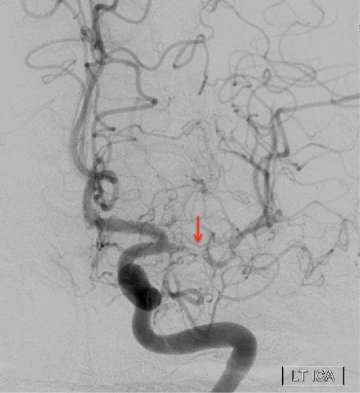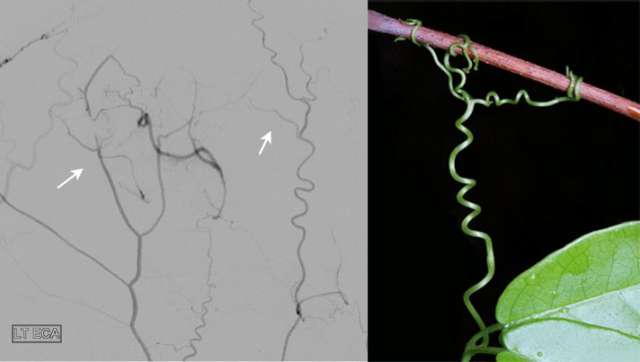Intracranial Arterial Stenosis
Find your care
Our interventional neuroradiology team has paved the way for interventional procedures, creating several of the devices and techniques widely used today. Call 310-267-8761 to learn more about our services.
What is moyamoya disease and intracranial arterial stenosis?
Moyamoya disease is a disorder of the arteries of the brain that produces narrowing of these conduits restricting the amount of blood that gets to the brain. Moyamoya disease is part of a spectrum of diseases of the arteries of the brain named intracranial arterial stenosis. Stenosis means narrowing. If the arteries of the brain, the structures that bring blood with oxygen and nutrients to the brain, are narrow the amount of blood reaching the brain may be insufficient and this produces strokes.
What are the symptoms of moyamoya disease or intracranial arterial stenosis?
A patient with this condition presents with symptoms of stroke or transient ischemic attacks (TIAs). Stroke and TIA symptoms are characterized by new onset of one or more of the following symptoms:
- Weakness of an arm, a leg, the face, or half of the body.
- Abnormal sensations, such as tingling or numbness, particularly of half of the body a limb, or half of the face.
- Difficulties speaking or understanding what others say.
- Loss of vision on one eye, or double vision.
- Loss of balance or dizziness.
If the symptoms are transient and disappear in few hours, this is called a mini-stroke or TIA. If they are longer lasting, they are a stroke.
In either case, any of these symptoms is an emergency. Any individual suffering suddenly of any of the above symptoms should call 911 immediately.
Strokes and TIAs are emergencies, and the best chance of being treated is if they are recognized early on.

What produces narrowing of the arteries of the brain?
In addition to moyamoya disease, the narrowing of the intracranial arteries can be produced by multiple factors including high blood pressure, tobacco use, diabetes, high cholesterol, and other diseases of the arteries, such as vasculitis, an inflammatory process of those vessels.
How is intracranial arterial stenosis diagnosed?
When a patient has symptoms of TIA or stroke, doctors will order a series of studies to evaluate the brain and the arteries of the brain. These tests include CT scans, MRI scans, and specialized tests to see the arteries of the brain called angiograms. Angiograms can be done with CT and MRI techniques, but in many cases the use of catheter angiographic procedures is necessary.
Angiographic procedures performed with a catheter give the most reliable and precise information in these conditions. Catheter angiograms are fundamental in the diagnosis and after treatment evaluation of intracranial arterial stenosis.
How are patients with intracranial arterial stenosis treated?
Patients with symptoms of TIA (mini-stroke) or stroke are initially treated with medications that thin their blood and reduce cholesterol. However, if they continue having symptoms, they may require additional interventions. Some patients may benefit from surgery to encourage the growth of new pathways that supply blood to the brain.
During the surgery to treat these conditions, the arteries from the scalp and the membranes surrounding the brain, called the meninges, are brought into close proximity to the brain. This surgical procedure is named EDAS, short for encephaloduroarteriosynangiosis. EDAS is a very effective treatment for moyamoya and other forms of cerebral arterial narrowing because EDAS stimulates the formation of new vascular connections between the re-routed arteries and the circulation of the brain, bypassing the narrowing of the brain arteries and creating new paths for the supply of oxygen and nutrients.

The figure shows multiple new arteries (arrows) growing from the scalp to the brain after an EDAS surgery in a patient with narrowing of the intracranial arteries. The arteries growing from the scalp resemble the tendrils of a vine reaching to supply additional blood to the brain.